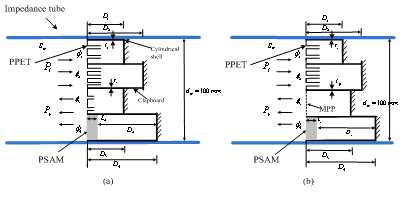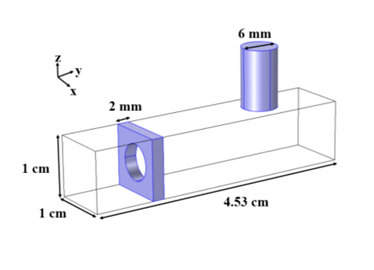Matching Pulse Waveforms Can Estimate Source Range in a Slope Environment
The approach of estimating source range in an ocean environment with sloping bottom is based on matching the depth structure of pulse waveform between the received and simulated signals. For the explosive sources in the experiment with two de...
Read More >>
A New Compound Sound Absorber Improves Sound Absorptive Performance in Low- to Mid-Frequency Range
Researchers LI Dengke and CHANG Daoqing from the Institute of Acoustics, Chinese Academy of Sciences investigate and propose a compound sound absorber, which comprised of perforated plates with extended tubes (PPET) and porous sound absorptiv...
Read More >>
Impedance-Matching Acoustic Bend Improves Impedance Ratio and Increases Transmission
Now, a research team from the Institute of Acoustics (IOA) of the Chinese Academy of Sciences designs an impedance-matching acoustic bend with perforated plates and side pipes, which can improve impedance ratio and increases energy transmissi...
Read More >>Iteration-based Time Delay Estimation Algorithm Speeds up Convergence
Researchers WANG Leiou et al. from the Institute of Acoustics of the Chinese Academy of Sciences have recently proposed an iteration-based variable step-size algorithm for adaptive time delay estimation. This algorithm possesses fast converge...
Read More >>Knowledge-aided Method in Partially Homogeneous Clutter Enhances Detection Performances
In partially homogeneous clutter, researchers from the Institute of Acoustics of the Chinese Academy of Sciences together with researchers from Italy have recently worked out a knowledge-aided adaptive detection method for a point-like target...
Read More >>

